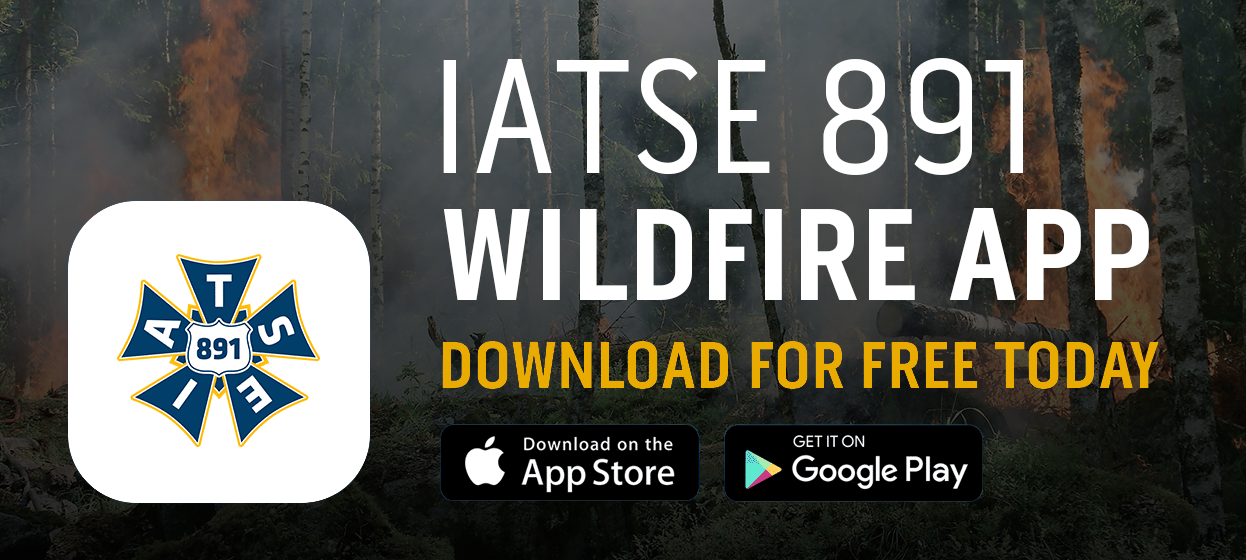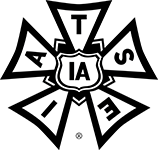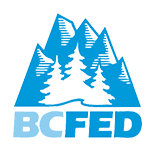

.
Click here to download the app on your Apple device.
Click here to download the app on your Android device.
The IATSE 891 Wildfire App was developed for our employers and members to assess workplace levels of smoke exposure during a wildfire event. The information provided on the app is based on Washington State's Wildfire Smoke Rule, which could assist in an employer’s obligations under WorkSafeBC’s General Duty clause (Worker’s Compensation Act Part 2 Division 4) in advance of, or during a wildfire event. Please do not ignore the risk of wildfire smoke exposure. This app is free and available on Google Play or the Apple App Store.
Wildfire App FAQ
What is the purpose of the 891 Wildfire App?
The 891 Wildfire App is a tool to assist employers and workers in assessing risks and applying safety protocols on worksites affected by wildfire smoke. Smoke from wildfires can cause a range of serious health effects - both employers and workers need to understand dangers in their work environment when smoke is present and the efforts that can be taken to reduce these risks.
When would you use the 891 Wildfire App?
The 891 Wildfire App should be utilized when workers are affected by wildfire smoke to consider risks and safety protocols based on levels of PM2.5 particulate when wildfire smoke is present.
What is measured by the 891 Wildfire App to understand the risks of wildfire smoke in my location?
The 891 Wildfire App reports on information provided by monitoring stations located throughout BC, on levels of PM2.5 particulates in the air when wildfire smoke is present.
What is PM2.5 and why is it hazardous?
Wildfire smoke is a mix of harmful gases and particulates. The fine particulates (PM2.5) represent the main health risk from wildfire smoke. These microscopic particles can penetrate the deep lung, are invisible to the human eye, and have been connected to a variety of adverse health effects.
Are there any workplace regulations for Wildfire smoke?
Currently there are no specific workplace regulations or guidelines in Canada or British Columbia that informs employers or workers on safety best practices when wildfire smoke is in a working environment.
Despite the lack of specific wildfire smoke regulation in British Columbia, employers are required by WorkSafeBC’s General Duty clause (Worker’s Compensation Act Part 2 Division 4) to protect the health and safety of their workers. Knowing what protections should be used regarding wildfire smoke threats in the workplace remains a difficult task for employers implementing their own control plans, as a plan should be developed prior to an incident developing.
Why use the Washington Wildfire Smoke Rule?
Wildfire smoke is subject to occupational regulations in California, Oregon, and Washington State. The regulations in these three states outline PM2.5 thresholds when measuring risks related to wildfire smoke –– as well as the actions that employers in each state are required to take to limit their workers’ exposure levels.
IATSE 891 decided to implement the Washington Wildfire Smoke Rule as Washington is both the closest geographically and the most recent to approve regulations that include data from both California and Oregon. In line with IATSE 891’s stance on preparation as the preventative measure, Washington’s Rule was significantly more explicit about the need for planning ahead of a wildfire smoke occurrence.
What is the difference between occupational health and public health?
Occupational health and safety are focused on the prevention of accidents, hazards, or any harm to a worker from a work-related activity or incident. Public health and safety are focused on protecting the health and safety of our general population, including those from young to old, and people with diseases or underlying health issues.
Why does the 891 Wildfire App differ from air quality index readings from various other weather apps?
PM2.5 plays a significant role in determining the air quality ratings and is a reliable predictor of wildfire smoke when it is smoky. Additional pollutants like ozone, PM10, nitrogen dioxide, and sulphur dioxide are included in the calculation of air quality index ratings (such as the Air Quality Health Index, or AQHI in British Columbia).
Because the 891 Wildfire App only assesses PM2.5, it is only useful when there is smoke from wildfires actively present in your given location.
The risk categories related to wildfire smoke and air pollutant safety can vary between public health advisories and the 891 Wildfire App, even in areas where there has been wildfire smoke (e.g., a high danger reading for the public is different and may read as a moderate risk for workers). The software was created with workplaces in mind and has a different scale of risk measurement.








